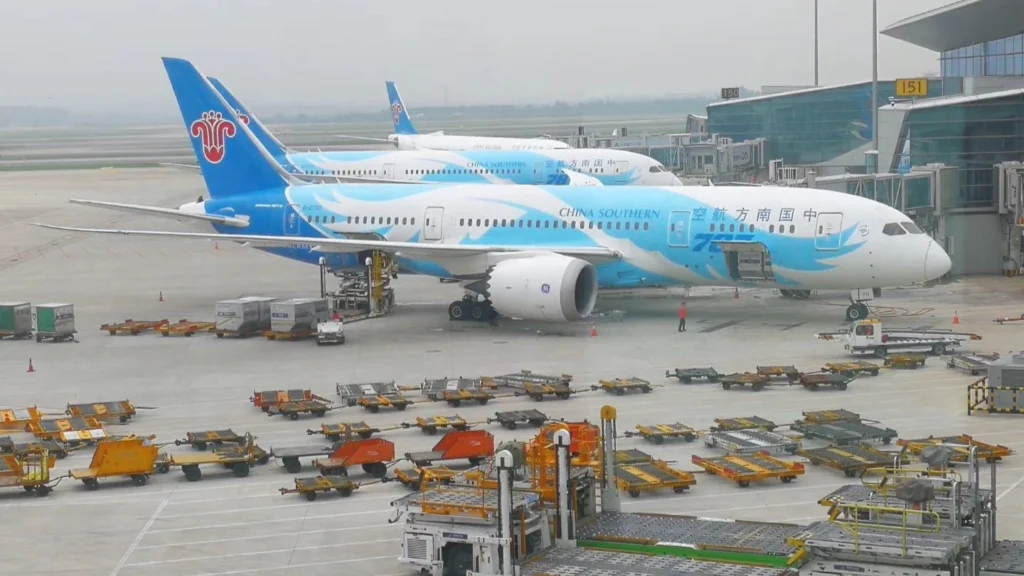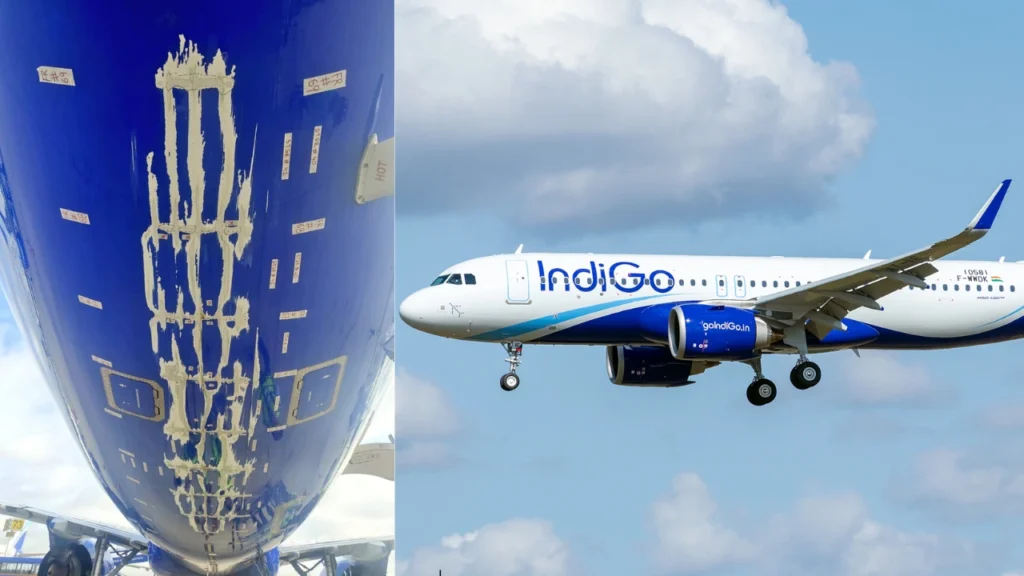SHANGHAI- Major Chinese carrier, China Southern Airlines (CZ) Boeing 787 Dreamliner Fuselage sustained heavy damage and crack amid a tail Strike during landing.
The accident occurred when a state-owned airline operating flight CZ3534 from Shanghai Hongqiao International Airport (SHA) to Guangzhou Baiyun International Airport (CAN) encountered a tail strike on October 21, 2024.

Boeing 787 Fuselage Crack
According to reports, China Southern Airlines 787 sustained structural damage on Monday as it made a heavy landing at Guangzhou Airport.
China Southern operates more than 15 daily flights on a 731-mile flight route between Shanghai and Guangzhou mostly using a widebody fleet.
According to Flight Radar 24 data, China Southern Flight CZ3534 took off from Shanghai at 3:05 AM UTC. The flight remained airborne for around one hour and 50 minutes until it aligned with the runway for landing.
The aircraft’s tail and rear fuselage made hard contact resulting in 2.47g force with the Runway 02L. The plane continued to taxi despite a tail strike and reached its designated gate.
The aircraft involved in the incident is a Boeing 787-9 Dreamliner, registered as B-1243. Further, it is a 6.5-year-old aircraft and is powered by GEnX engines. The aircraft is grounded and will be fascinating to see how they will make it airworthy again.
China Southern Airlines operates a huge fleet of 655 aircraft, which includes almost all variants of Airbus, Boeing, COMAC, and Embraer Jets.
Guangzhou-based carrier maintains a fleet of 28 Dreamliner, out of this 18 are 787-9 variant.

Comments by Avgeeks
Aviation community members raise critical concerns about the CZ 787 structural damage and flight crew decisions.
One aviation expert identifies potential missed opportunities in flight crew decision-making. The analysis suggests an alternative approach involving rejected landing procedures, de-rotation maneuvers, and go-around thrust application could have minimized damage.
The expert highlights how maintaining a nose-up attitude against flight computer inputs resulted in compromised aircraft control.
Engineering specialists question the repairability of the carbon fiber tail section. The extensive damage pattern raises concerns about structural integrity, particularly given the advanced composite construction methods used in modern aircraft.
Technical analysis reveals the mid-fuselage crack’s significance surpasses visible surface damage.
Boeing’s repair capabilities face additional challenges due to ongoing labor strikes affecting 30,000 workers.

Similar Incidents
Such heavy landing and tail strike incidents are not very rare but they do cause significant costs to airlines and can lead to severe damage to aircraft and its systems.
In September 2024, IndiGo Airlines (6E) flight 6E6054 from Delhi (DEL) to Bengaluru (BLR) with Airbus A321neo, registered as VT-IBI, experienced heavy damage after a tail strike.
Following this, the Indian aviation watchdog, DGCA grounded the pilot as it began an investigation into the incident. I am sure the Chinese aviation authority will also carry out a detailed assessment of CZ’s 787 incident.
Last year, DGCA issued a fine of 30 Lakhs INR on IndiGo for four back-to-back tail strikes.
Similarly, in April 2023, Qatar Airways flight QR614 from Doha (DOH) to Islamabad (ISB) using Airbus A350, registered as A7-ALN reported a tail strike.
Qatar pilots after the tail strike performed a go-around and later landed normally. It was a minor damage but took it around a month to return to service.
Stay tuned with us. Further, follow us on social media for the latest updates.
Join us on Telegram Group for the Latest Aviation Updates. Subsequently, follow us on Google News

